
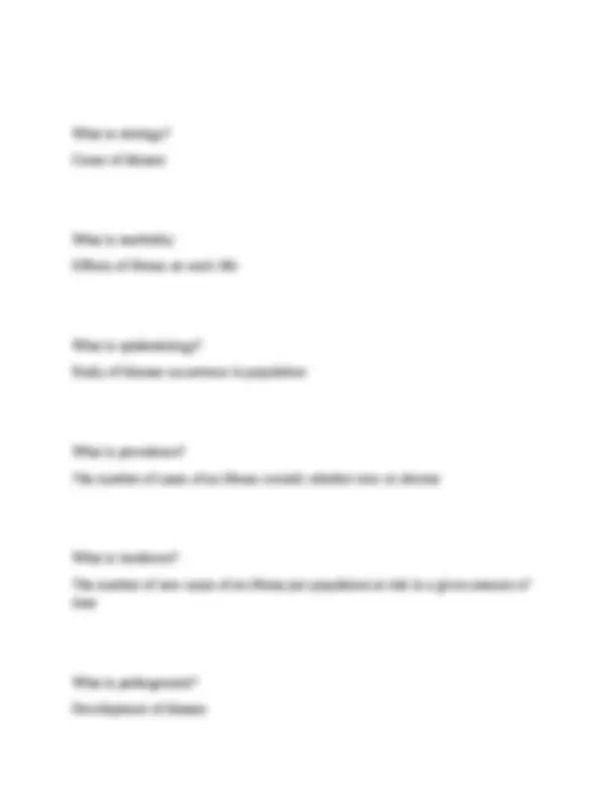
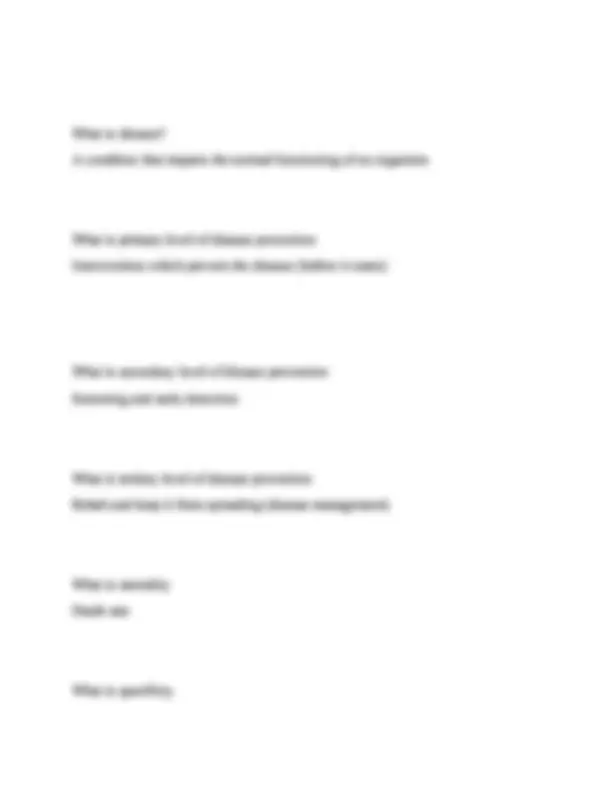
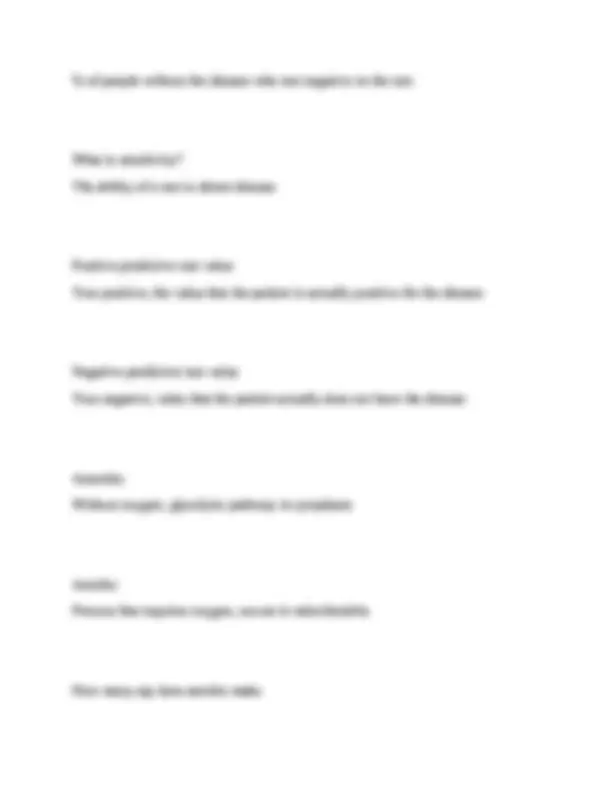
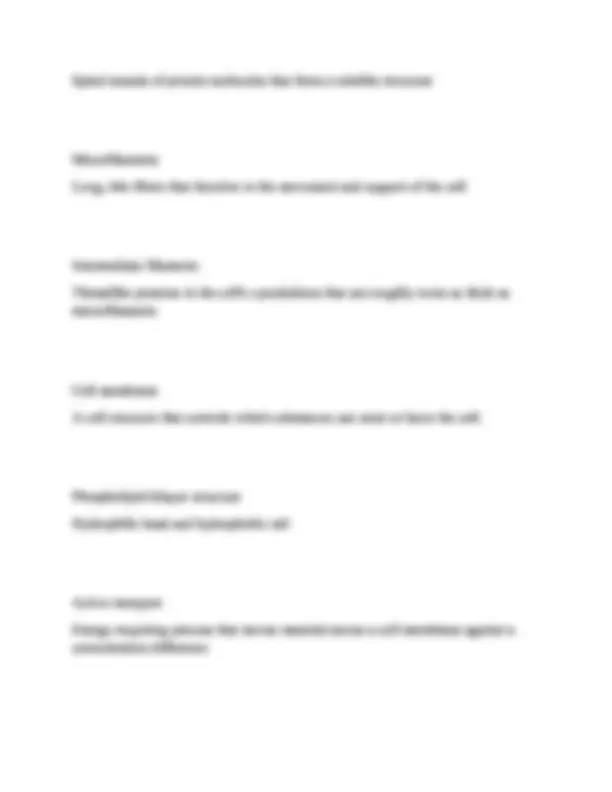
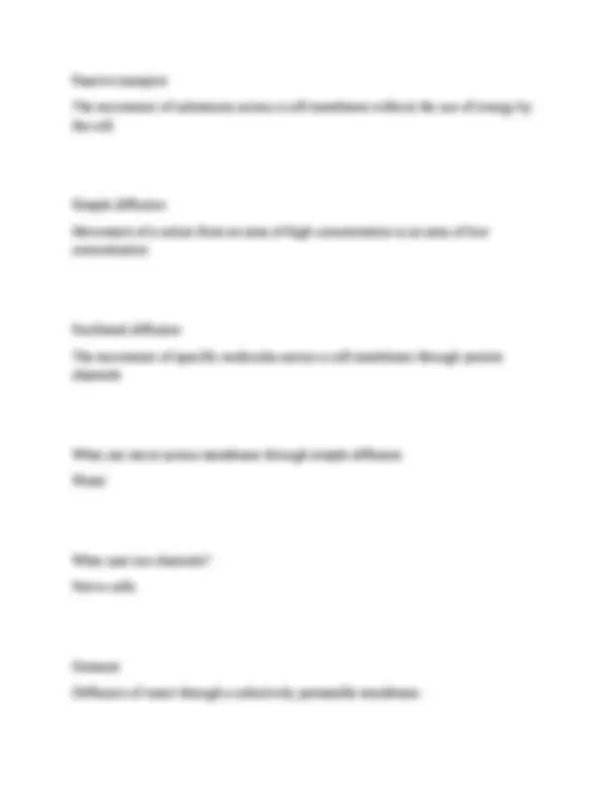
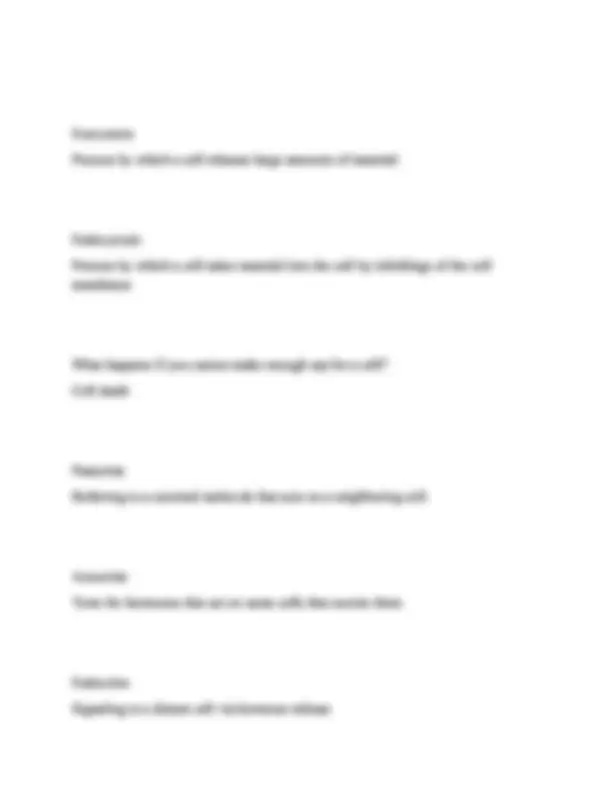
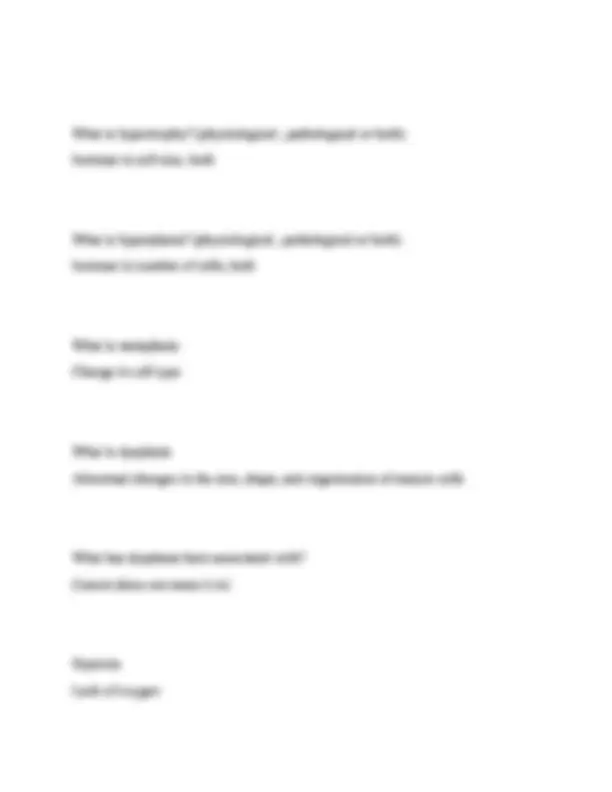

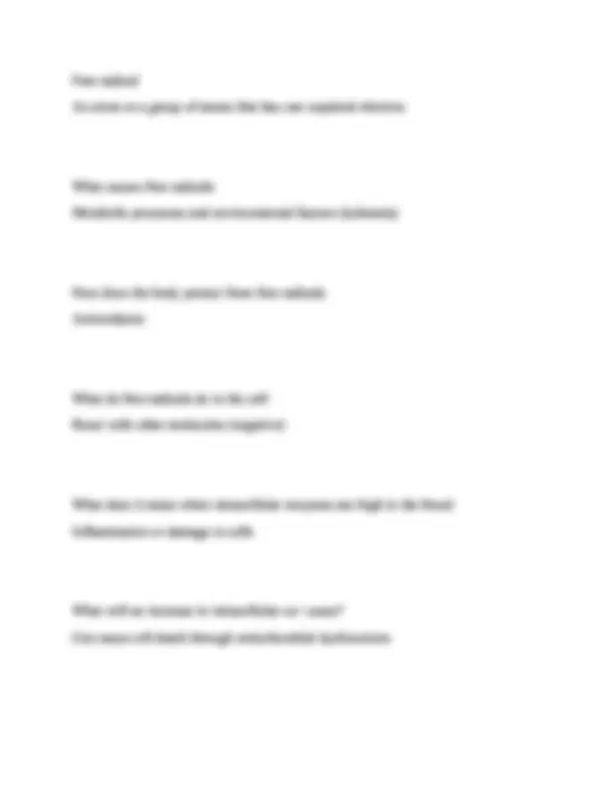
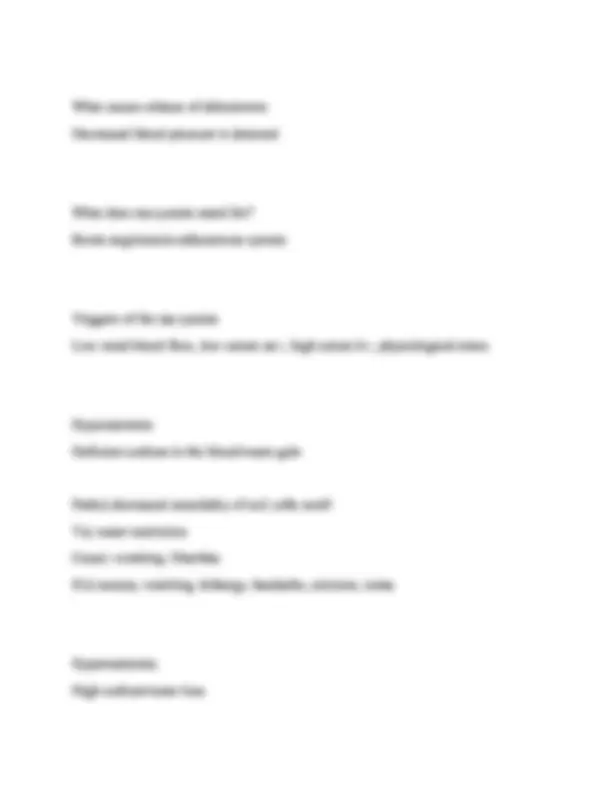
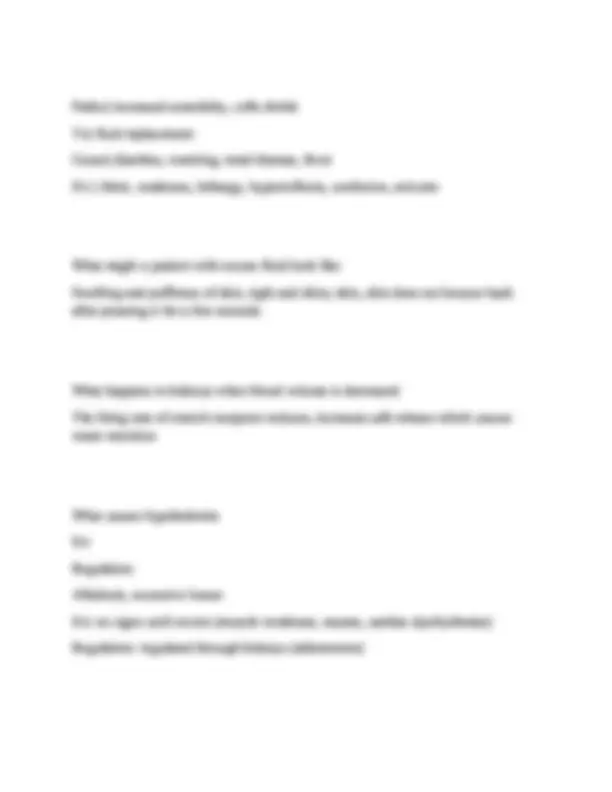
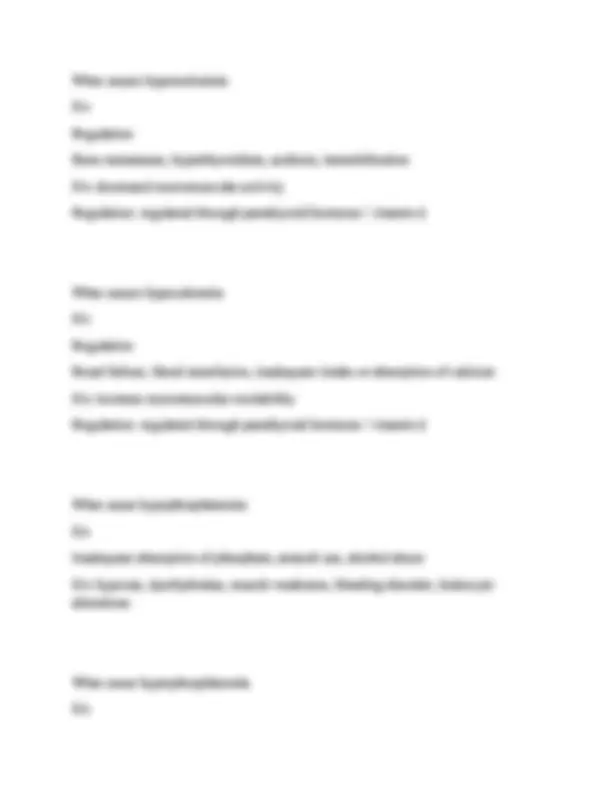
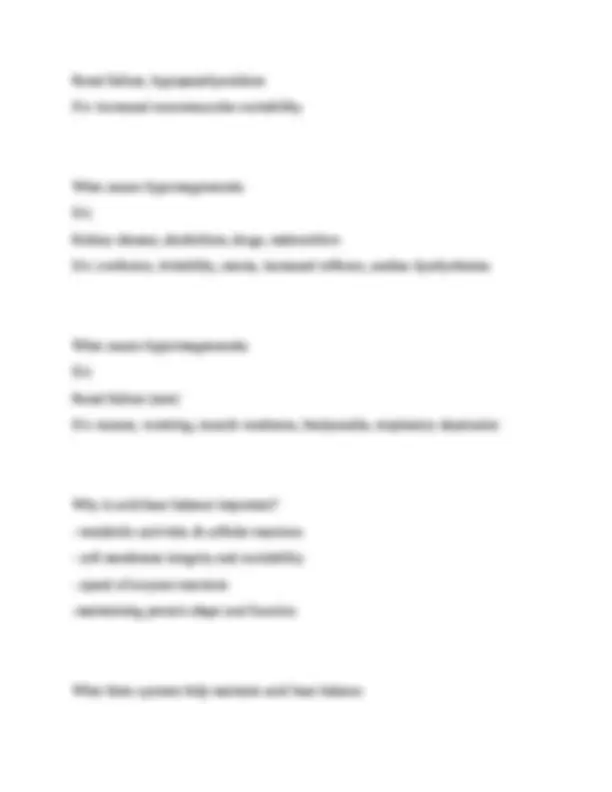
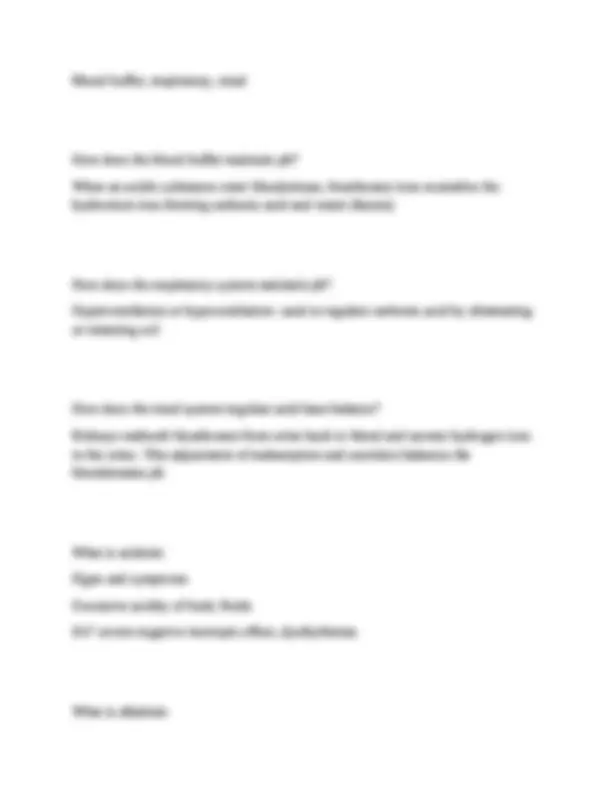
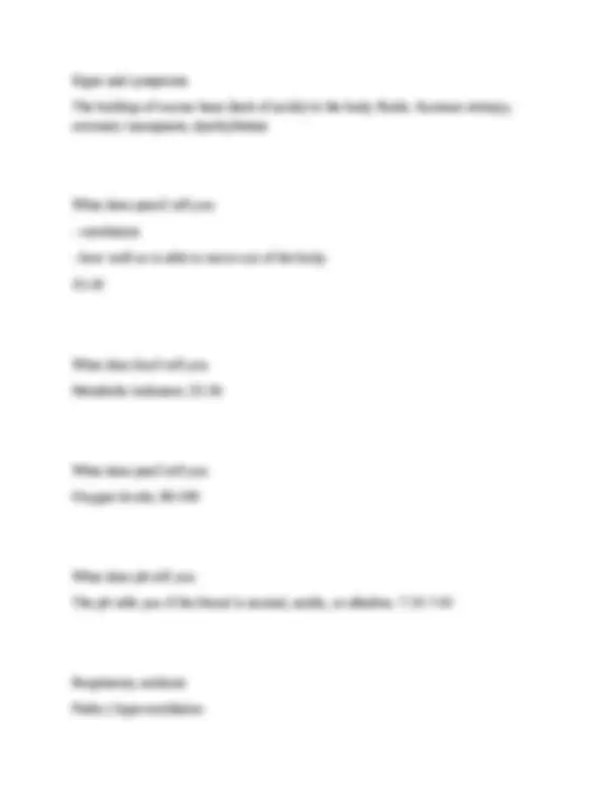
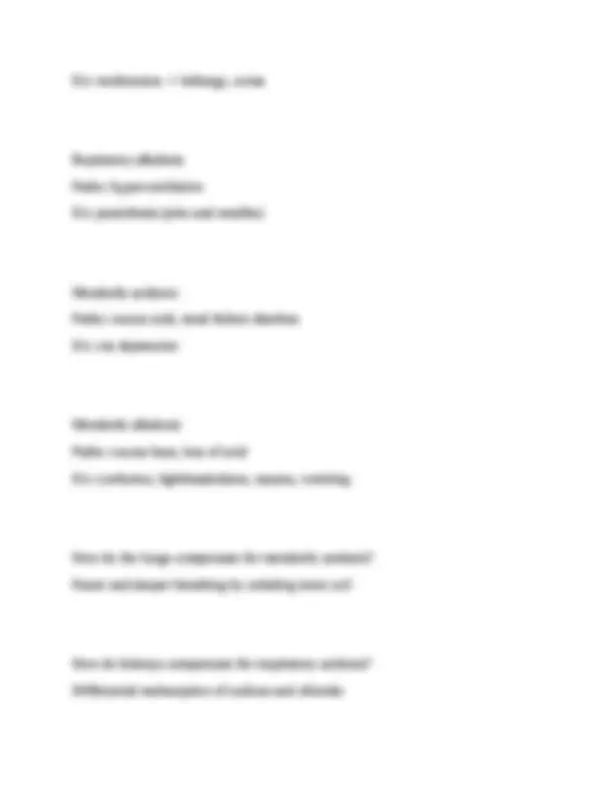
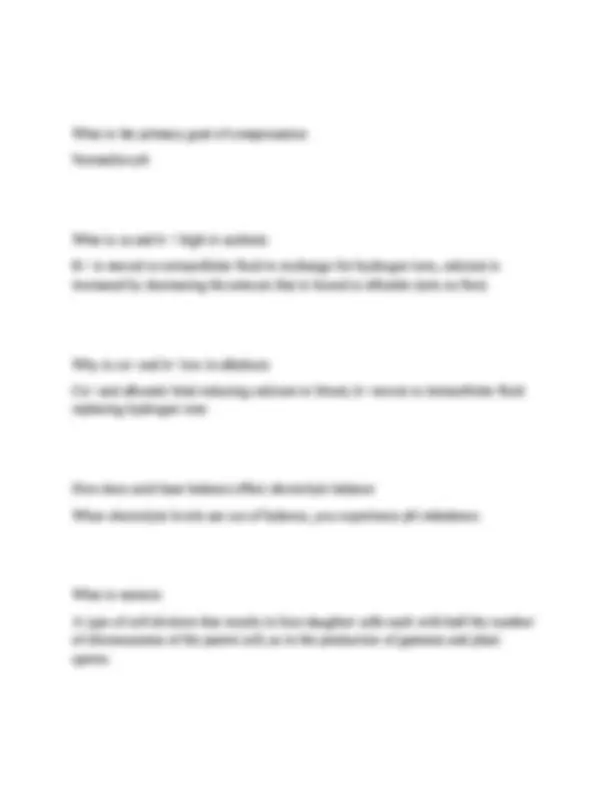
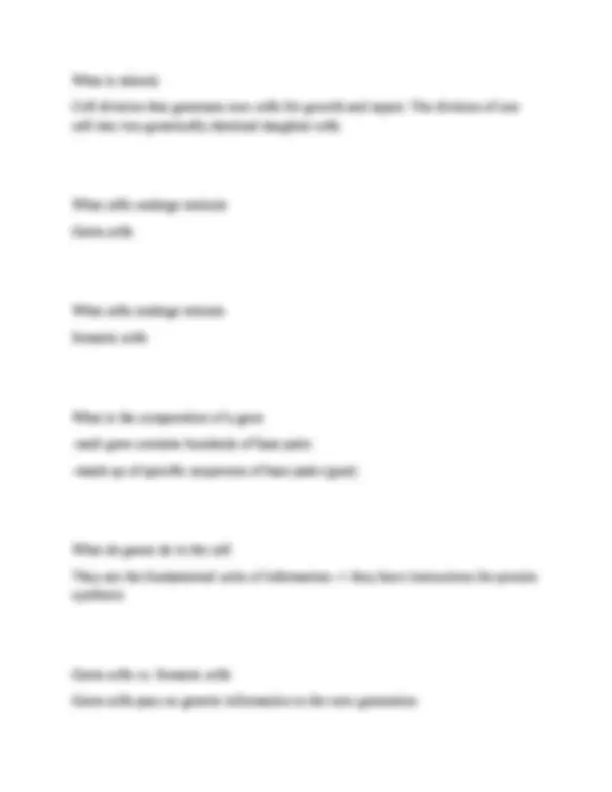
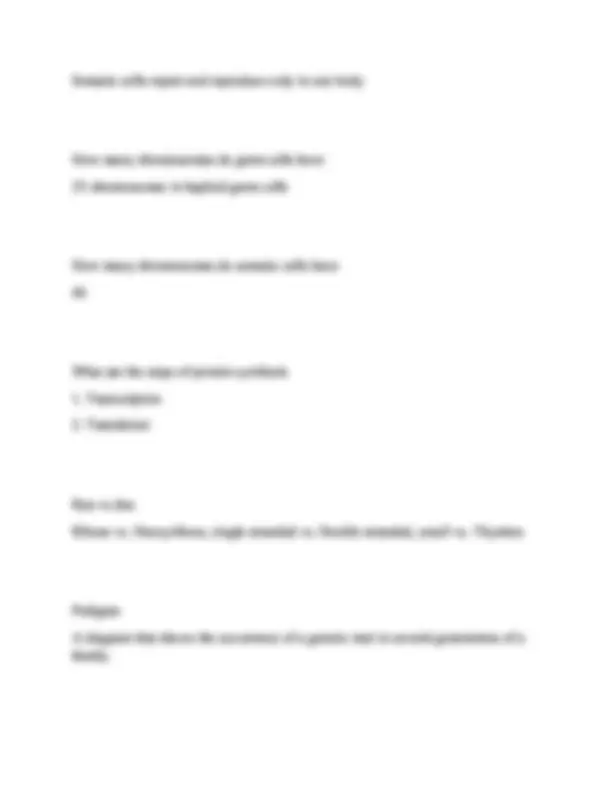
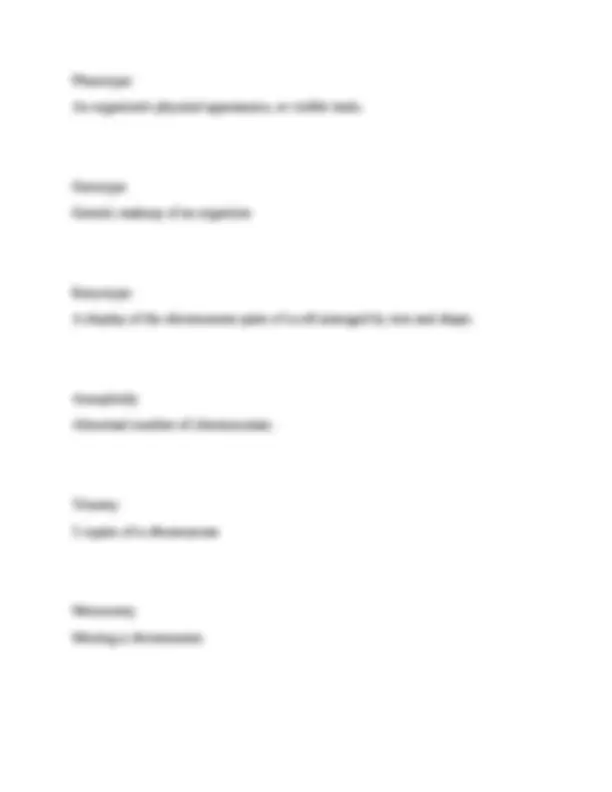
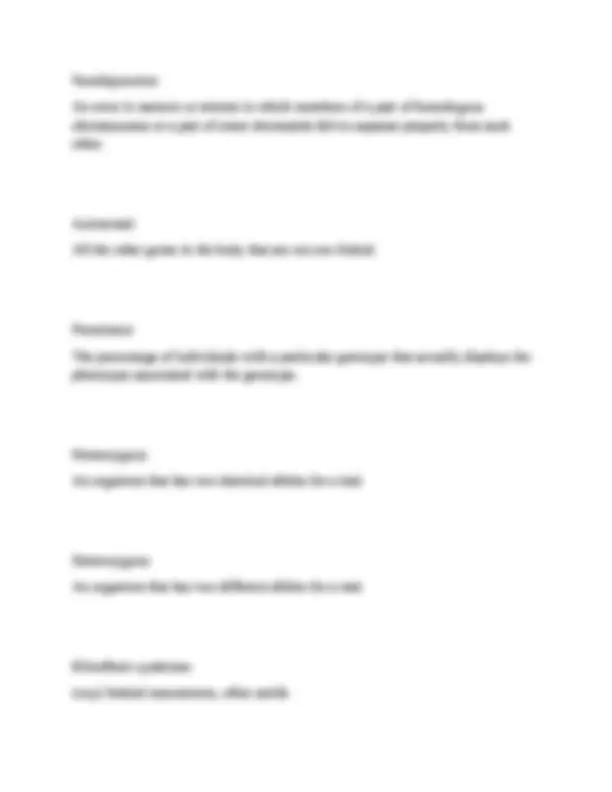
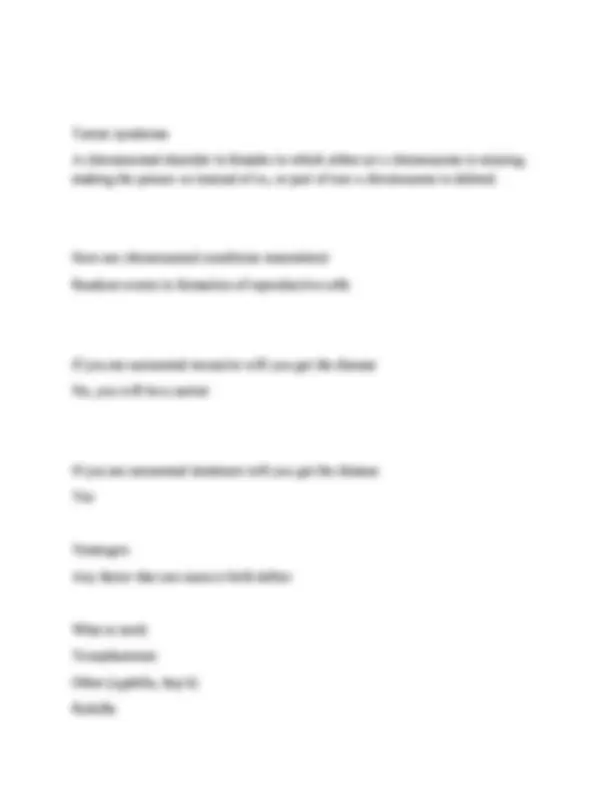



Study with the several resources on Docsity

Earn points by helping other students or get them with a premium plan


Prepare for your exams
Study with the several resources on Docsity

Earn points to download
Earn points by helping other students or get them with a premium plan
Community
Ask the community for help and clear up your study doubts
Discover the best universities in your country according to Docsity users
Free resources
Download our free guides on studying techniques, anxiety management strategies, and thesis advice from Docsity tutors
PATHO EXAM 1 REVIEW SESSION QUESTIONS WITH CORRECT AND VERIFIED ANSWERS. A+ GRADED. Hydrostatic pressure The pressure within a blood vessel that tends to push water out of the vessel What happens to pressure in capillary beds if you have a patient who has heart failure with extra fluid in the body and extra hydrostatic pressure? Edema Why don’t we all have edema? Venous end of capillary beds pull water back in What is the force at the venous end that pulls stuff back in? Capillary colloidal osmatic pressure What makes water move in osmosis? (out of tissue back into blood stream) Albumin Does albumin leave and enter the blood vessel? Why or why not? No, too big to leave the blood vessel What happens if you don't have albumin, or decreased albumin? Edema
Typology: Exams
1 / 31

This page cannot be seen from the preview
Don't miss anything!























